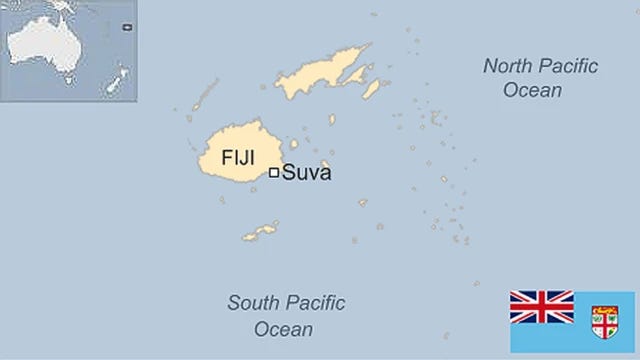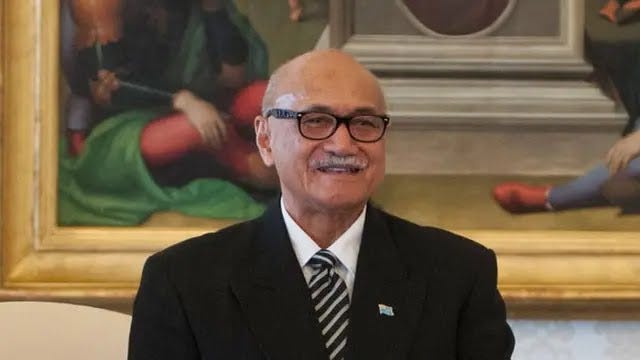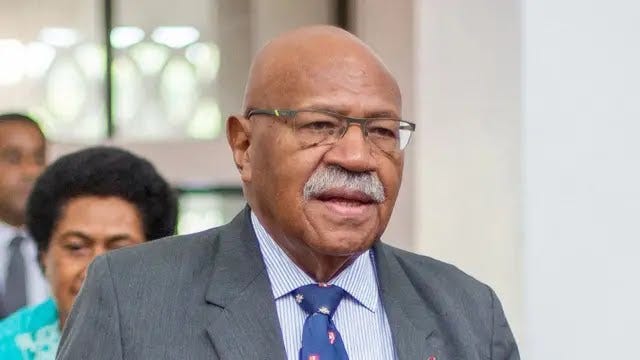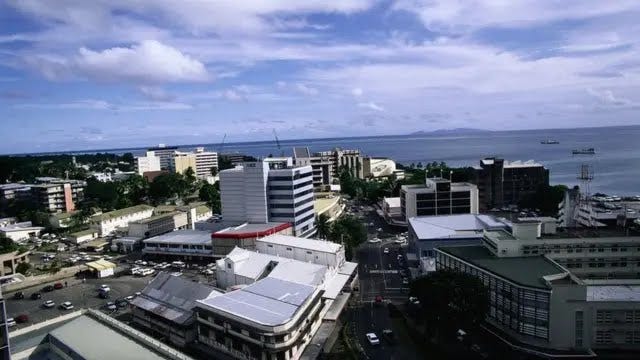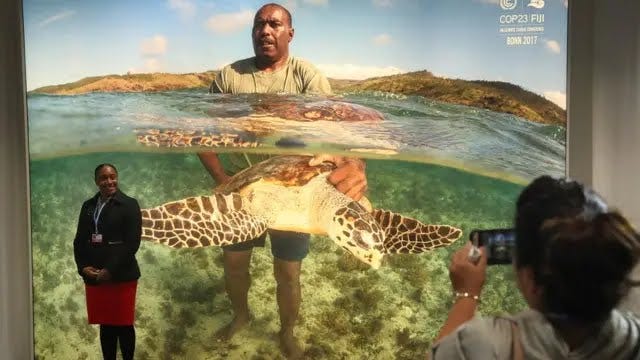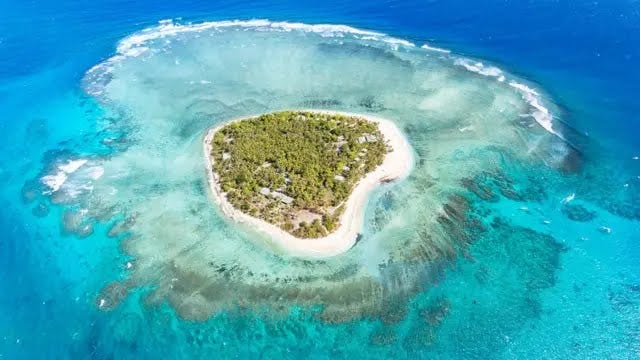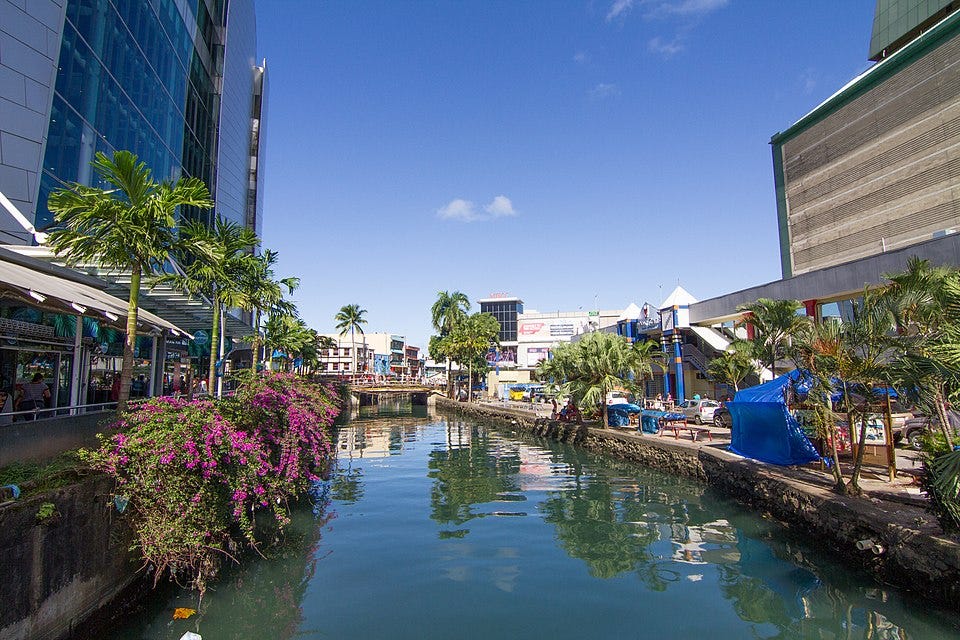Fiji country profile
The economy of Fiji is one of the most developed among the Pacific islands. Nevertheless, Fiji is a developing country endowed with forest, mineral and fish resources.
Fiji has one of the most developed economies in the Pacific, relying heavily on its tourism and sugar industries.
Since independence from Britain in 1970, rivalry between the indigenous Fijian and the ethnic Indian communities has been at the root of much of the political upheaval in the country.
The archipelago consists of more than 330 islands and 540 islets scattered over about 3,000,000 sq km (about 1.1 million sq miles). Of the islands, about 100 are inhabited.
REPUBLIC OF FIJI: FACTS
Capital: Suva
Area: 18,274 sq km
Population: 926,200
Languages: Fijian, English, Fiji Hindi, plus Rotuman
Life expectancy: 65 years (men) 69 years (women)
LEADERS
President: Jioji Konousi Konrote
Jioji Konousi Konrote was elected as president in October 2015. He is the first non-indigenous president and the first to be elected by parliament. Previous presidents were selected by the Great Council of Chiefs (GCC).
He has had a long career in the military, government and diplomatic service.
Prime Minister: Sitiveni Rabuka
Sitiveni became prime minister in December 2022 following general elections in which opposition parties reached a deal to form a new coalition government, ending Prime Minister Frank Bainimarama's nearly 16-year rule.
Fiji's coalition government has broader regional significance. Both parties have signalled a desire to cool relations with China, which has been steadily increasing its financial and diplomatic interests in the Pacific.
Mr Bainimarama came to power in a 2006 coup, one of a series of political upheavals since Fiji gained independence from the UK in 1970. The rivalry between the indigenous Fijian and the ethnic Indian communities has been at the root of much of the tensions.
In 2013 the constitution was changed to remove a race-based electoral system that favoured indigenous Fijians over the country's large Indian population.
Mr Rabuka is a former international rugby player who was the leader of Fiji's first coup in 1987, which came after tensions between indigenous Fijians and ethnic Indians. He served as prime minister in 1992-99.
MEDIA
Image caption,Fiji's capital Suva: The country has one of the most developed economies in the Pacific
Private TV and radio stations operate alongside outlets run by the state-owned Fiji Broadcasting Corporation.
Reporters Without Borders has praised the media's "spirit of resistance" but says journalists are restricted by a "draconian" media decree.
TIMELINE
Image caption,Fiji has been at the forefront of international efforts deal with climate change, which threatens to submerge low lying islands
Some key dates in Fiji's history:
1643 - Dutch explorer Abel Tasman is the first European to visit the islands.
1830s - Western Christian missionaries begin to arrive.
1874 - Fiji becomes a British crown colony at the request of Fijian chiefs.
1875-76 - Measles epidemic wipes out one-third of the Fijian population; British forces and Fijian chiefs suppress rebellion.
1879-1916 - More than 60,000 indentured labourers brought in from the Indian subcontinent to work on sugar plantations.
1916 - British colonial government in India stops the recruitment of indentured labourers.
1920 - All labour indenture agreements in Fiji end.
1970 - Fiji becomes independent with Ratu Sir Kamisese Mara of the AP as prime minister.
1987 - Indian-dominated coalition wins general election, ending 17 years of rule by the AP. Lieutenant-Colonel Sitiveni Rabuka seizes power in a bloodless coup with the aim of making indigenous Fijians politically dominant. In a saecond coup he proclaims Fiji a republic
1999 - Mahendra Chaudhry is elected Fiji's first ethnic Indian prime minister but is overthown a year later when bankrupt businessman George Speight and retired major Ilisoni Ligairi storm parliament, aiming to make indigenous Fijians the dominant political force.
2001 - Elections to restore democracy.
2002 - Fiji announces radical privatisation plan designed to stave off collapse of vital sugar industry threatened by withdrawal of EU subsidies.
2006 - Military chief Frank Bainimarama carries out coup.
2012 - Martial law is lifted.
2014 - Frank Bainimarama becomes the country's civilian leader after winning parliamentary elections.
2016 - At least 42 people are killed and tens of thousands are left homeless as Cyclone Winston hits Fiji in the worst storm ever recorded in the southern hemisphere.
Image caption,Fiji consists of an archipelago of more than 330 islands
The BBC
Overview
Fiji's economy, one of the more developed in the Pacific, is heavily reliant on tourism, agriculture (including a large subsistence sector), and light manufacturing, with sugar exports and tourism being major foreign exchange earners.
Here's a more detailed look:
Key Features:
Economic Structure:
Tourism: A primary driver of the economy, with earnings from tourism exceeding the combined revenues of the country's top five exports.
Agriculture: A significant sector, including both subsistence farming (by indigenous Fijians) and commercial agriculture (primarily sugarcane, produced by independent Indian farmers).
Light Manufacturing: Includes garment manufacturing, boatbuilding, brewing, and paint manufacture.
Services: A strong service sector serving Fiji and neighboring countries.
Mining: Gold, silver, and lumber are also produced.
Major Exports:
Water, raw sugar, refined petroleum, processed fish, and gold are key exports.
The main destinations for exports are the United States, Australia, Tonga, New Zealand, and Samoa.
Economic Indicators:
Fiji is considered a middle-income country, but still a developing nation with a large subsistence agriculture sector.
GDP: Fiji's GDP is estimated at $5.494 billion (nominal, 2023 est.) and $10.054 billion (PPP, 2020 est.).
GDP Growth: Fiji's economy is projected to grow by 3.1 percent in 2024, after expanding by 20 percent in 2022 and 8 percent in 2023.
Challenges:
Debt: The debt-to-GDP ratio is projected to climb to 90.9 percent of GDP in 2022, reflecting borrowing to counter the impact of COVID-19.
Natural Disasters: Fiji is vulnerable to climate-related events like hurricanes and droughts, which can impact both sugar production and tourism.
Political Instability: Political instability can deter tourists and negatively impact the economy.
Economic Freedom: Fiji's economic freedom score is 59.1, making its economy the 93rd freest in the 2025 Index of Economic Freedom.
Trade and Investment:
Fiji and Australia have strong trade and investment ties, with Australia being a major trading partner and a source of foreign investment.
Australian investments in Fiji are predominantly in tourism, the financial sector, and manufacturing.
Key Sectors:
Tourism: The tourism sector is a major source of foreign exchange, with earnings from tourism exceeding the combined revenues of the country's top five exports.
Sugar: Sugarcane production and processing are a significant part of the economy, with sugar exports being a major source of foreign exchange.
Agriculture: The agriculture sector includes both subsistence farming and commercial agriculture, with crops like copra, cocoa, kava, taro, pineapples, cassava, and bananas being grown.
Fishing: Fishing is an important activity, with fish being both consumed domestically and exported.
Economy of Fiji
The economy of Fiji is one of the most developed among the Pacific islands. Nevertheless, Fiji is a developing country endowed with forest, mineral and fish resources. The country has a large agriculture sector heavily based on subsistence agriculture. Sugar exports and the tourism industry are the main sources of foreign exchange. There are also light manufacturing and mining sectors.
Economy of
Fiji
Suva
Currency
Fijian Dollar (FJD, FJ$)
Trade organisations
WTO
Country group
Developing/Emerging
Upper-middle income economy
Statistics
Population
913,174 (2023 est.)
GDP
Increase $5.494 billion (nominal, 2023 est.)
Decrease $10.054 billion (PPP, 2020 est.)
GDP rank
156th (nominal, 2020)
151st (PPP, 2020)
GDP growth
3.5% (2018) 1.0% (2019e)
−4.3% (2020f) 8.0% (2023)
GDP per capita
Increase $5,868 (nominal, 2023)
Increase $11,685 (PPP, 2018)
Source: Wikipedia



